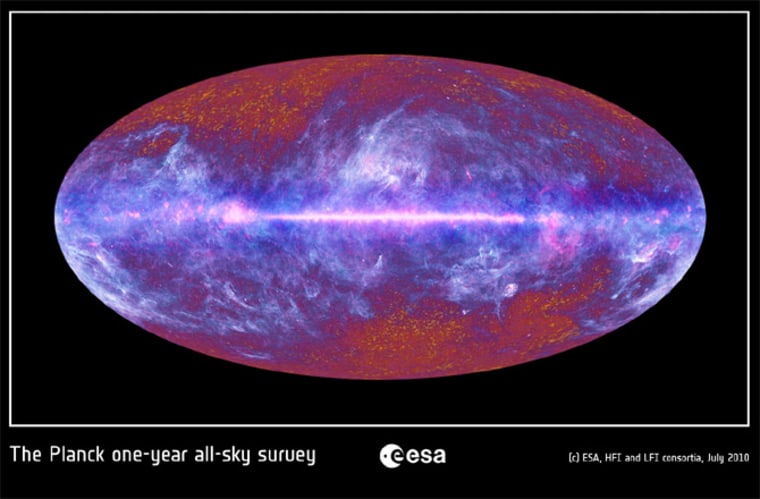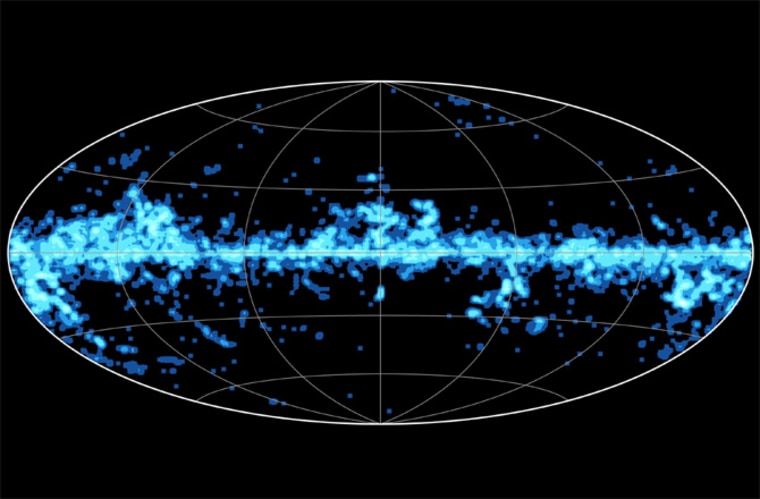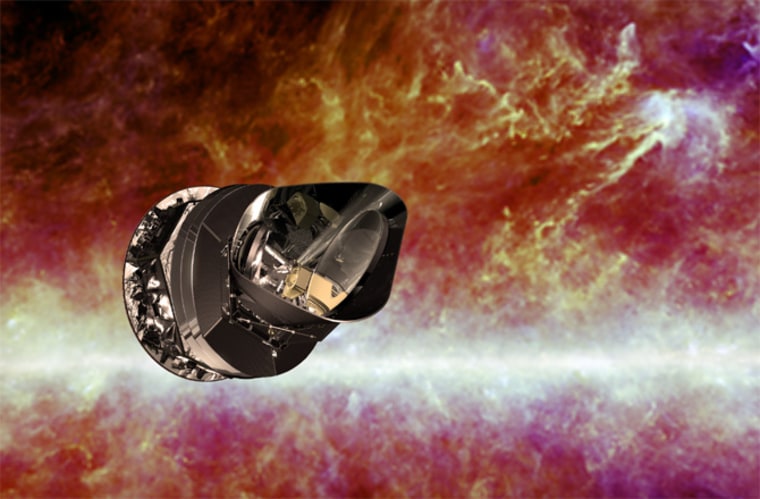Launched in 2009 by the European Space Agency (ESA), the Planck space telescope has spent years soaking up radiation from the furthest most reaches of the universe. One of its major tasks has been to catalog the faint patterns in the endearing electromagnetic remnants of our universe’s infancy with unprecedented precision.
This information may push our observational investigations to within a fraction of a second of our universe’s birth. Unfortunately, the public release of these data isn't due for another few months — an influential voice on one of mankind’s oldest conversations is locked in a European hard drive.
Unless you contemplate humanity’s greatest mysteries on a regular basis, let’s take a break from our daily routines and get a touch existential: how did reality get here?
Big Bang reality
In a certain sense, one could end the conversation by saying reality is here today because it was here yesterday. This is the picture the laws of physics paint for us. But what if we asked what reality was doing 5 trillion days ago, that is, around the time of the Big Bang?
Without the new Planck data, humans have traced reality back 13.7 billion years using other precise observations of our wild cosmos – including data from the successful NASA Wilkinson Microwave Anisotropy Probe (WMAP). These investigations reveal a fascinating picture: the entire universe was once hot, dense and could have fit under your fingernail. This is the remarkably successful Big Bang theory. However, the conversation about the Beginning doesn’t quite end here. The household Big Bang model actually comes with its fair share of baggage.
Just as what reality is doing now depends on what reality was doing yesterday, what reality did 13.7 billion years ago set the stage for the subsequent evolution of our universe. The galaxies, the stars, the planets and, perhaps most importantly, life depends on what this stage looked like.
While any candidate theory of our origins will, of course, have to predict a stage that allows the universe to grow into beings that can think about their origins, a scientifically satisfying stage would be one that did not require many unexplained facts. The success of science is driven by this dissatisfaction with the poorly explained. Without further qualification, the original Big Bang model predicts a very delicate arrangement of initial conditions — a whole slew of scientifically unsatisfying, unexplained facts.

Cosmic inflation
During its run, Planck has sifted through a weak bath of microwave light that pervades our universe. This bath of light, an almost perfectly homogenous funk of photons leftover from our cosmos’ younger, denser years, is dubbed cosmic microwave background (CMB) radiation. The mysteries of the very early universe hide in the tiny irregularities and faint patterns in this universal backdrop of low energy radiation. Signatures of an exotic tweak to the original Big Bang theory called cosmic inflation, formulated to rid the original theory of some of its baggage, could be among them.
Proponents of inflation propose that, in the first fraction of a second, the universe underwent a brief, but extraordinary expansion, a kind of exponentially “Bigger Bang.” Imagine blowing up a balloon to the size of the universe in the blink of an eye — and you wouldn’t have truly captured the process. But it turns out this exponentially wilder picture dissolves many of the snaggy problems of the original theory.
As an example, consider that space itself can bend in the presence matter or, more precisely, mass. This is actually the phenomenon we call gravity. Locally, the sun warps the space in our solar system and Earth rides this bent space like an astrophysical slide in an orbit around the star.
Similarly, an entire universe filled with matter and radiation can do some large-scale bending. In fact, on paper there are actually infinitely more ways for a universe to exhibit some large-scale curvature than for it to have no global bending.

Oddly enough, the universe we live in looks eerily flat. The original Big Bang model can only attribute this to an unexplained, delicate initial arrangement of the matter and radiation in our universe that prevented any large-scale curvature.
If a process like inflation occurred, the flatness of our universe is explained more naturally. In the way a wrinkled balloon and a smooth balloon begin to become indistinguishable if you inflate them enough, an exponentially inflated universe would no longer require a delicately arranged initial stage with respect to the arrangement of matter and radiation. Our cosmos could have begun with nearly any curvature and emerged looking flat after a period of inflation.
This back and forth between the original Big Bang model and cosmological models including a period of inflation continues, with inflation continually providing more natural mechanisms for otherwise unexplained facts. On paper, inflation is a big idea. On a hard drive in Europe, it could be exponentially bigger.
A smoking gun
Planck data may hold evidence for what members of the physics community, like Peter Timbie from the University of Wisconsin-Madison, commonly refer to as inflation’s smoking gun: a massive collection of propagating bends and kinks in space itself, called gravitational waves.
Analogous to the way one can send a wave pulse down a taut rope, massive objects and violent events in the universe can bend and kink space itself, sending waves propagating away. Unambiguous evidence of the violent, exotic period of inflation would be traces in the CMB of these gravitational waves.
In actuality, the picture is slightly more complicated because, as Timbie somewhat reluctantly points out: “There are a whole range of models for inflation and it’s a continuum of energy scales it can occur at. The lower energy scale models wouldn’t give us anything we could see — certainly nothing Planck would see and pretty quickly out of reach of any experiment.”
Additionally, other physicists like Daniel Chung, also of the University of Wisconsin-Madison, have discovered a handful of interesting “non-inflationary solutions” to particular problems with the original Big Bang theory. As if the story needed another twist, it turns out that, at least on paper, interactions in extra dimensions with a “hidden’ universe” can account for certain unexplained conditions in our early cosmos.
So the picture is complicated. But what if Planck has seen evidence for a process like inflation, what next? Is our existential investigation finally over? Admittedly, probably not. As Timbie says, if the Planck data ends the search for inflation, it “would really just be the beginning.”
While we would inch ever closer to a consistent and explanatory model of reality, the philosophical gap between an observable universe’s origins and a reality’s origins would still be tough to close.
In fact, the assumption that reality is the type of thing that can have a beginning is just that, an assumption. What was reality doing a day before the Big Bang? might turn out to be a perfectly coherent question as our understanding of our origins becomes ever more clear.
And asking these types of questions and garnering evidence with telescopes like Planck might turn out to be our only path to answering our initial, existential query: how did reality get here?
David Marulli is a senior at University of Wisconsin-Madison, majoring in physics and philosophy.
